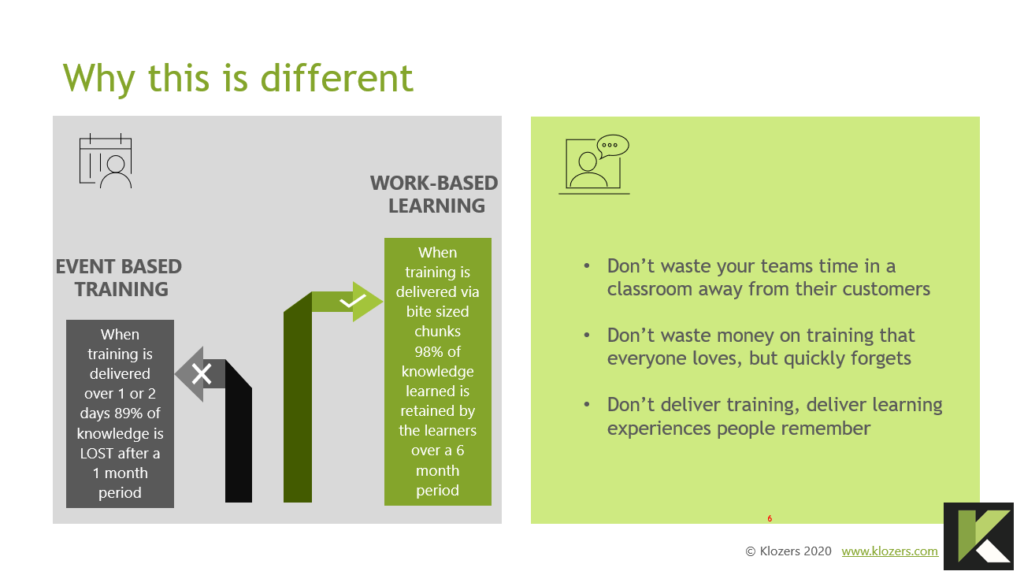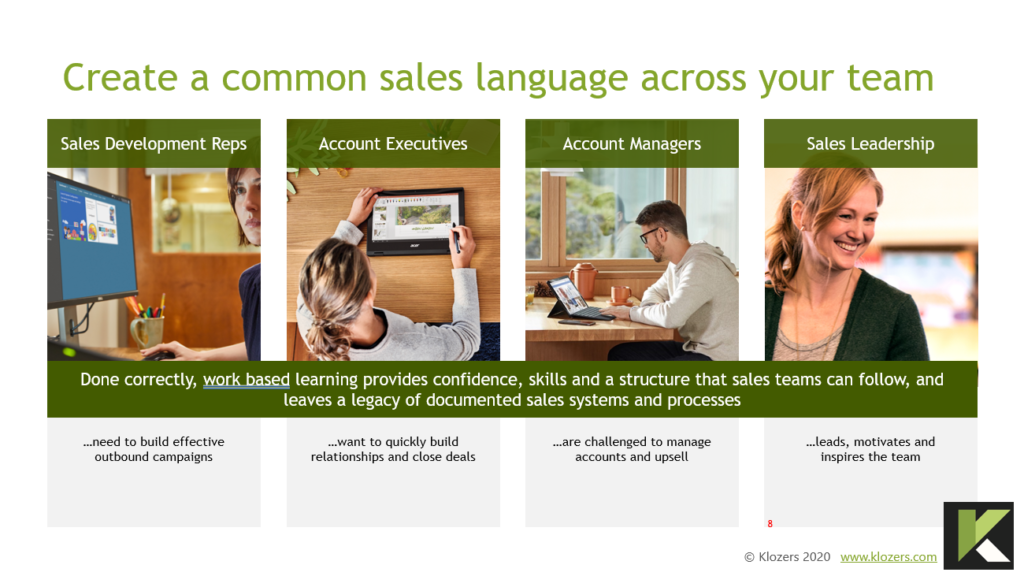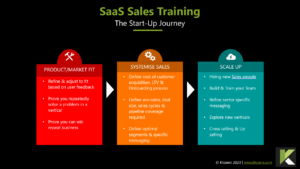4. How to create a Sales Training Academy?
4.1 Executive buy-in. The most successful training projects we have worked on all have buy in from senior Executives and the Academy is a part of their wider sales/business strategy.
What does this mean? They have aligned the Academy in a way that helps them achieve their sales/business objectives and by definition the Academy then becomes a strategic initiative/project that they are invested in both at a practical and emotional level.
How do we do this? There are normally two parts to this as follows.
a) First would be to examine the goals of the business strategy and the sales strategy, and then look for areas the Academy can help them achieve those goals. Examples of this could be; entering new markets, moving into larger or smaller accounts within the same market, launching new products and services, increasing revenues, product splits and margins.
b) Look for areas that the board don’t know what they don’t know. For example, you could work out the average revenues for the 40 salespeople, then work out how many are below that average and by how much. In nearly every company that is an achievable target.
You could create “Problem Statements” like:
“The average contribution to revenue per salesperson is £200k per annum and with 43% (17 out of 43) of our salespeople below this average figure by more than £50K it’s costing the company £850K per annum”
“87% of our Salespeople who are delivering 71% of our revenue are over 55 and eligible for retirement in the next 5 years and we have no succession planning in sales to cope with this.”
“69% of our salespeople sell only three out of ten products in our portfolio and based on the figures of the salespeople who are selling across our portfolio we are missing out on £5.1M in revenue.”
“Our competitors are slowly eroding our margins and customer base and the data shows the only way our salespeople have been responding is by lowering prices which is reduced our margins by 7% in the last 2 years.”
“We have 40 salespeople who sell 40 different ways which means we have no consistent sales process to follow, track, record and ensure the day to day activities of the sales team are aligned with the business strategy.”
I appreciate this will take time and research, however, all of this helps build a business case which they will expect when you go to ask for funding. They need to know the size of the problem, not just that there is a problem.
4.2 Once you have some form of Exec buy in (in principal only at this stage) we should be looking at (in no particular order):
4.2.1 What is the Vision for the sales academy? – What should the Academy look like in 3 years, what will the academy have achieved in three years [curriculum, number of students, impact on the business, impact on the students] ?Structure
4.2.2 How will we measure success? – How do we link the training to your skills needs analysis to ensure it’s relevant? What trainers do we have currently and how can we develop more trainers internally? Do we have a “Change” programme in place? [Unlike things like IT training, Sales Training involves behavioural change. We will move faster and achieve more if we include a Change strategy.
4.2.3 Accountability – How will we hold the sales professionals responsible to using the new skills we teach? Do we need to train the managers first so they understand and buy into the new sales behaviours? How will we measure the new sales behaviours? How will we measure the impact of the Academy?
4.2.4 Support – What support and resources are available from other departments such as marketing, operations and IT? Do we have Exec level sponsorship and if so what are their needs and expectations?
4.2.5 Strategy – The strategy around your internal sales academy is import and where possible we would look for ways to:
Align the new academy with the company’s sales strategy or even better part of the overall business strategy
Tie the Academy into an upcoming new product/service launch.
Align the training with the companies HR and pay grades – this is really powerful.
Use the academy to identify and nurture Future Leaders
Use the academy to establish and record best practices in sales across the organisation
Include non-sales content to broaden the development such as training on “Commercial Awareness”
Where appropriate include some degree of cultural change. From non learning to learning, from pro-active to reactive, from customer service to five star service
Align the inside sales academy with existing technology to ease adoption and prevent the inevitable delays involved when introducing any new technology.







 training does a sales person need?” class=”wp-image-4615″/>
training does a sales person need?” class=”wp-image-4615″/>


